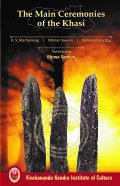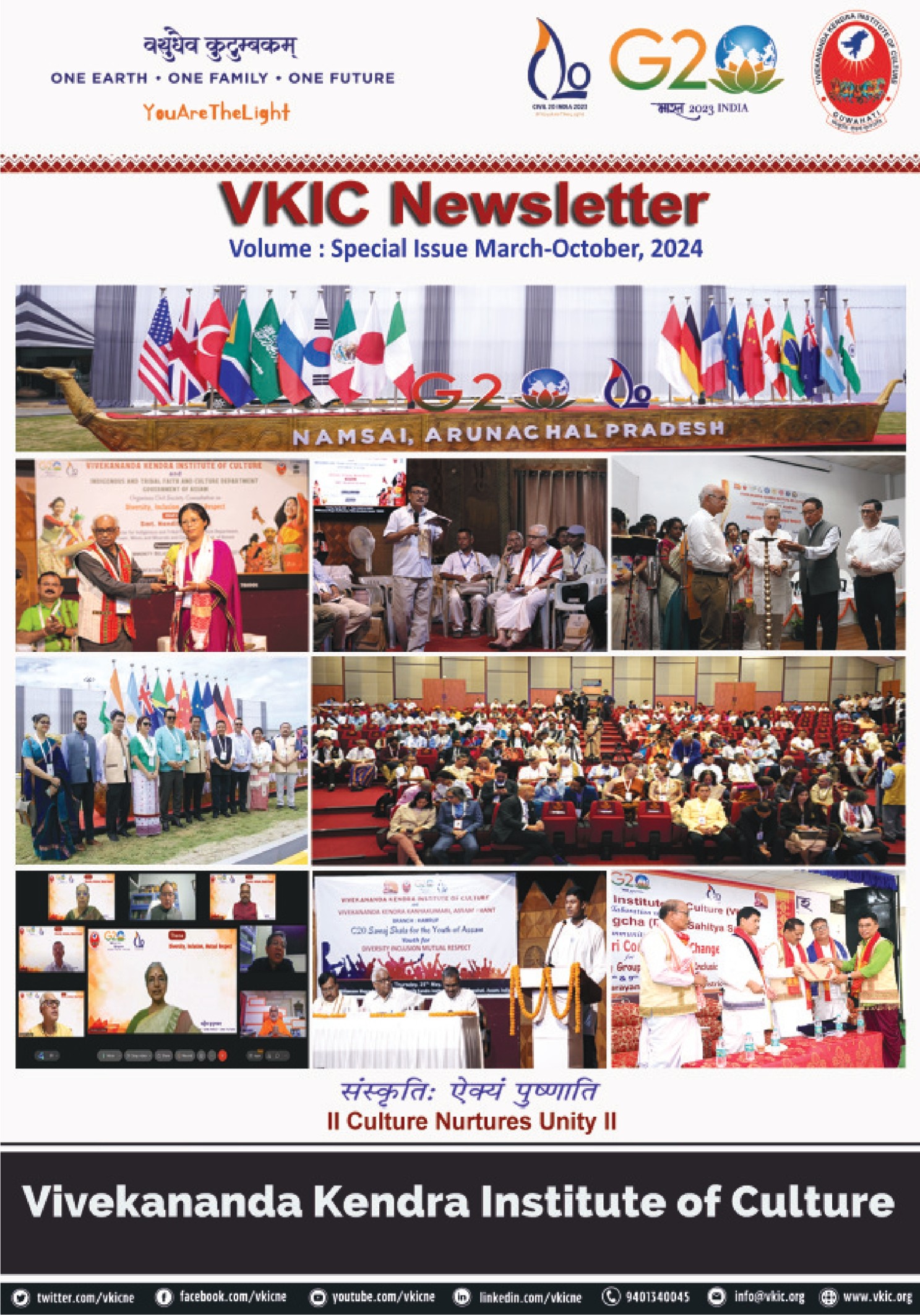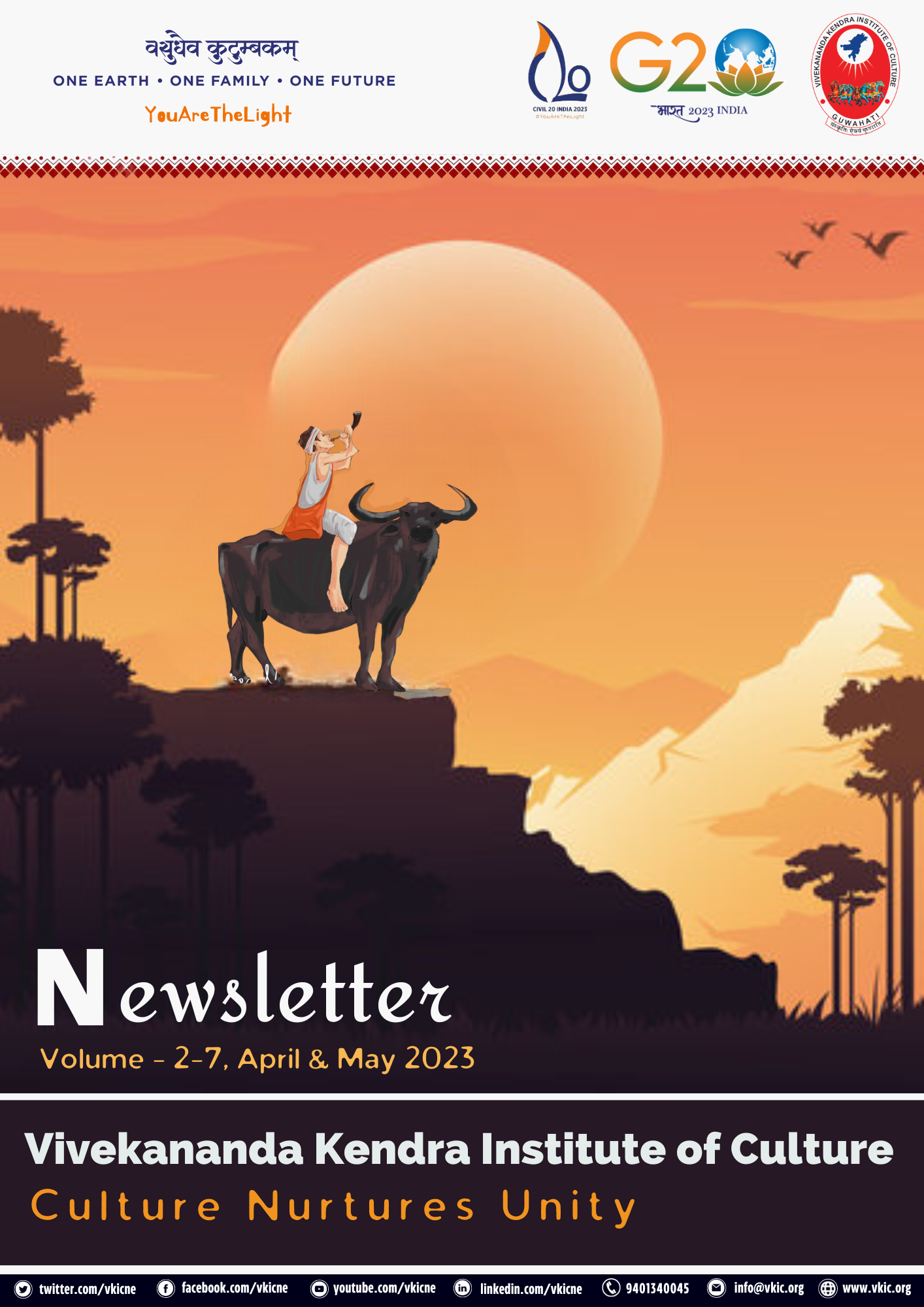“The Main Ceremonies of the Khasi” by Dr Nakaulang Nriame, Assistant Professor, Rangia College, Dept of History.
 The book entitled The Main Ceremonies of the Khasi is a translated work by Bijoya Sawain of three vernacular authors K.S. Marbaniang, Sitimon Sawain and Wallamphang Roy the book centered on the three important ceremonies of the Khasi community, their importance, and series of step and activities involved on it. Sawain has to her credit translated several books from Khasi into English which are mainly on the life and culture of the Khasi community. According to many historians, the Khasi Community of Meghalaya is one of the earliest inhabitants of undivided Assam. Despite the continuous onslaught of the more powerful religion such as Christian forces, they could sustain their traditions with a firm foundation which is aptly reflected in the book. The three articles narrate the naming ceremony of the baby, marriage, and death ceremony according to the Khasis belief and traditions. The authors of the three articles minutely narrate various shades of the ceremony with a list of materials required in each ceremony, the different sections of people involved in the ceremony, and the role played by each one of them. The book also narrates the various forms of prayers performed at various stages of the ceremony and also prayer hymns. Divine sanction and blessings are considered of utmost importance as each and every stage of the ceremonies are accompanied by a prayer to the U-blei – the supreme god for his blessings. Along with various prayers and rites involved in the ceremonies, the mantras or chanting in vernacular dialect has been rendered into English by Sawain which has enriched the contents of the book. Not only that, there are many Khasi terms that have been included in the book, which again have been rendered into English as well.
The book entitled The Main Ceremonies of the Khasi is a translated work by Bijoya Sawain of three vernacular authors K.S. Marbaniang, Sitimon Sawain and Wallamphang Roy the book centered on the three important ceremonies of the Khasi community, their importance, and series of step and activities involved on it. Sawain has to her credit translated several books from Khasi into English which are mainly on the life and culture of the Khasi community. According to many historians, the Khasi Community of Meghalaya is one of the earliest inhabitants of undivided Assam. Despite the continuous onslaught of the more powerful religion such as Christian forces, they could sustain their traditions with a firm foundation which is aptly reflected in the book. The three articles narrate the naming ceremony of the baby, marriage, and death ceremony according to the Khasis belief and traditions. The authors of the three articles minutely narrate various shades of the ceremony with a list of materials required in each ceremony, the different sections of people involved in the ceremony, and the role played by each one of them. The book also narrates the various forms of prayers performed at various stages of the ceremony and also prayer hymns. Divine sanction and blessings are considered of utmost importance as each and every stage of the ceremonies are accompanied by a prayer to the U-blei – the supreme god for his blessings. Along with various prayers and rites involved in the ceremonies, the mantras or chanting in vernacular dialect has been rendered into English by Sawain which has enriched the contents of the book. Not only that, there are many Khasi terms that have been included in the book, which again have been rendered into English as well.
In many indigenous communities, every name given to the baby has divine sanctioned and approval as reflected in the first article, the naming Ceremony or Ka Jer Ka Toh originally penned in Khasi by Kwor Shon Marbaniang. Once the baby is born, a few names are given to the baby, but the final name is selected by following traditional rites. The name of the baby so selected following the traditional intricate ritual procedures is considered to have a divine sanction and approval. As in the case of many aspects of human society, the gender binary is also reflected in the naming ceremony. As the baby boy is supposed to be the protector, provider, and progenitor of the family, a ritual is done accordingly, while the girl is to take care of the home with the virtue of productivity and thrift is expected of her and so prayer for the same to be endowed on her.
As reflected in the second article by Sitimon Sawain, the Marriage Ceremony or Ka Shongkha Shongman, the Khasi strictly adhered to a number of established norms before any marriage, such as the skills expected of the boy and girl, the clan lines, etc. For the boy to be able to polish three stones to make the heart, a wooden bowl for the pig, etc, and in the case of the girl her cooking skill and preparing dry fish, etc are considered required skills for marriage. Marriage between a close clan is strictly forbidden. The Khasi, therefore, followed strict principles to preserve clan purity - khein kur khein kha which means ‘know and respect one kith and kin’. Marriage and family union are eternal. Therefore, ample space is given to the couple to be familiar with each other before marriage is finalized. Time is given to the couple to know each other and be compatible with each other even in an arranged marriage. As in most of society, the paternal uncle played a vital role in all aspects of the Khasis marriage. A tradition unique to the Khasi is the groom who left his parents to stay with the bride’s parents after marriage.
The death ceremony of the Khasi is one such ceremony in which the members of the entire village are involved with the main responsibility taken up by the father clan. One of the unique traditions of the Khasi death ceremony is the duration of which lasted for three days. One came across such traditions among the neighbouring Karbi community too. Another traditional practice unique to the Khasis is the collection of the ashes and intern of the same in Mawbah- a large stone repository of the clans. The logic of such practices is their belief that the soul of the clan stays together in another world after they left the human world. Indigenous community knowledge about environmental consciousness is very rich but is seldom acknowledged by modern society. The Khasi practice of burying the dead is a case of death during a plague to avoid air pollution against their usual tradition of cremation, and a prayer offered to mother earth - Mei-Ramew before they prepare a pyre in the cremation ground is the case in point. The role played by the Nongkhylla Thang i.e the group of people entrusted with the responsibility to ensure that the mortal remains are properly burned, and the importance given to them by the clan members of the dead is a reflection of mutual respect and reciprocity maintained by the village community towards each other.
Overall, the book not only gives details descriptions of the important ceremonies passed down from generation to generation, their belief system, and traditions but it also reveal the various social institution of the society, the clan system, and the role played by the clan system in the society and the importance of it in traditional society. It also reflects mutual respect and helps maintained society towards each other. The gender divide in traditional society and the role played by the different gender is also reflected in the book. A deep look into the book would also reflect on the environmental consciousness in traditional Khasi society as well. Overall, this book; though small in volume, is an essential reading for all students interested in history of ethnic culture, religion and philosophy.


